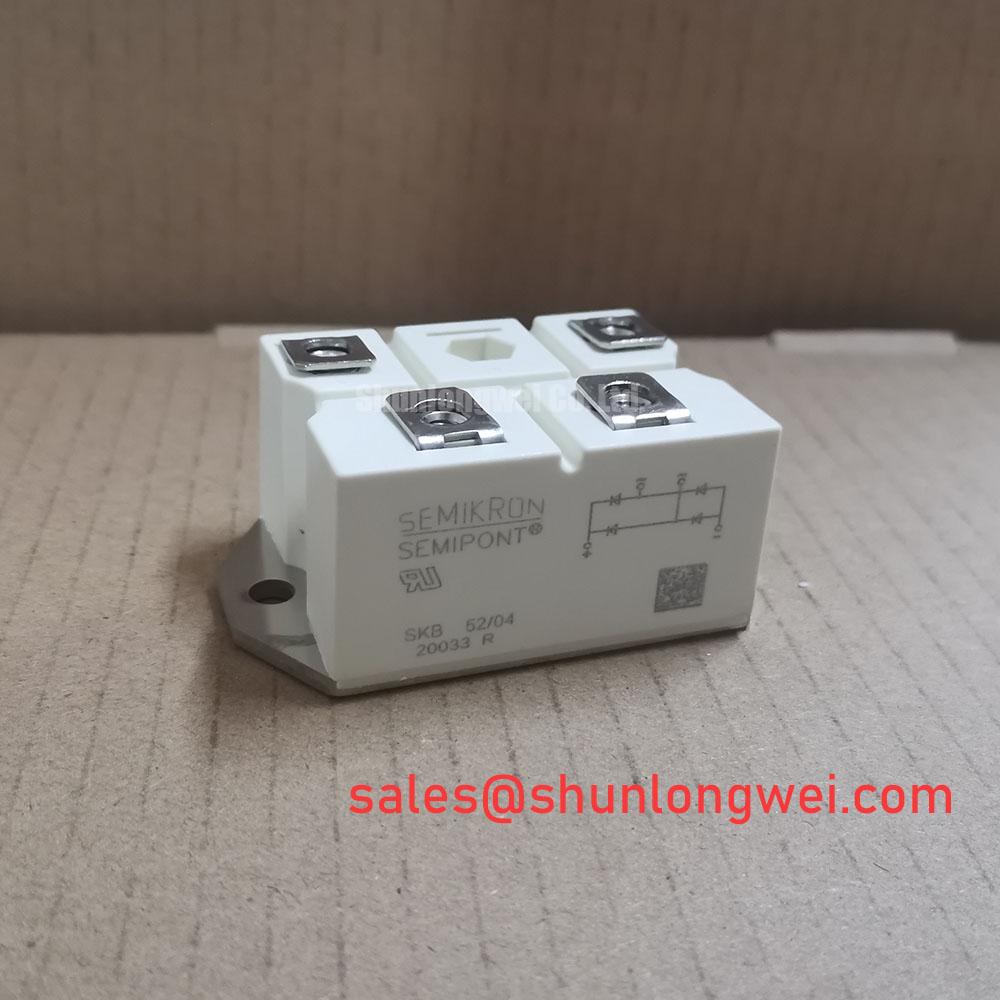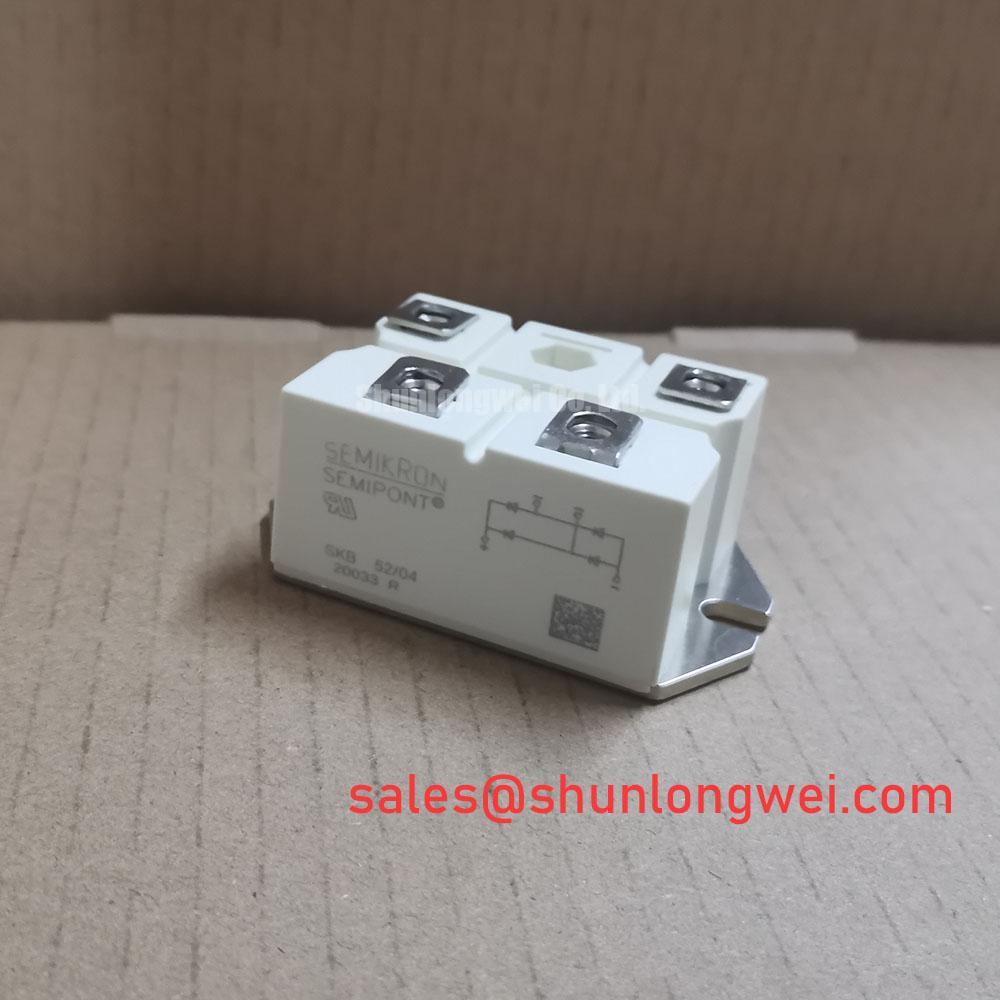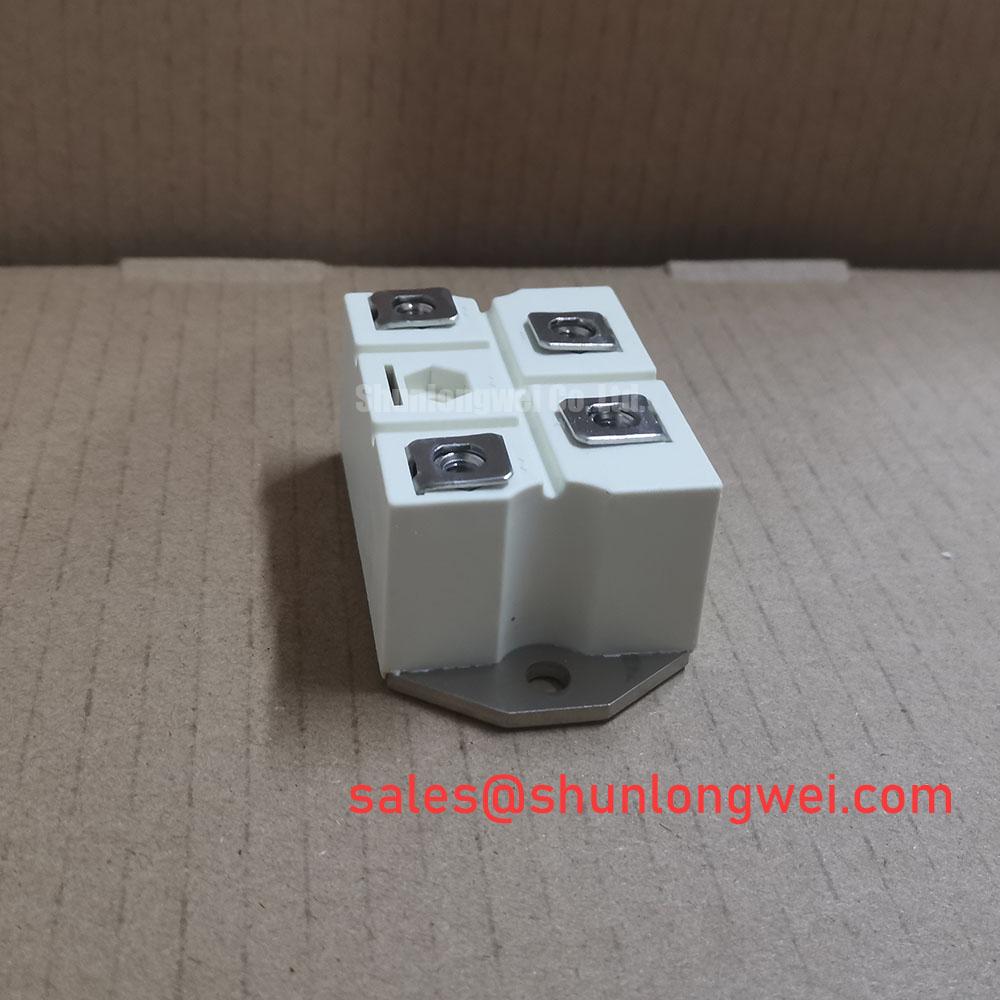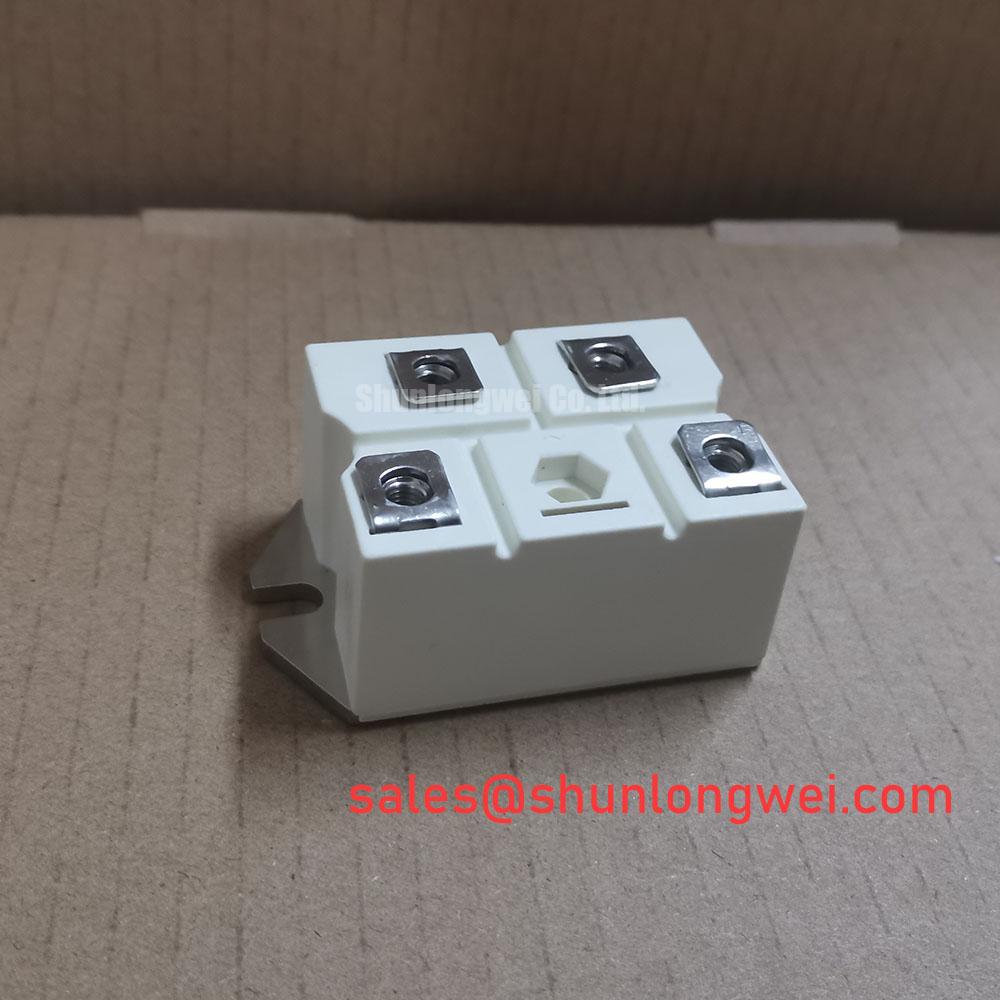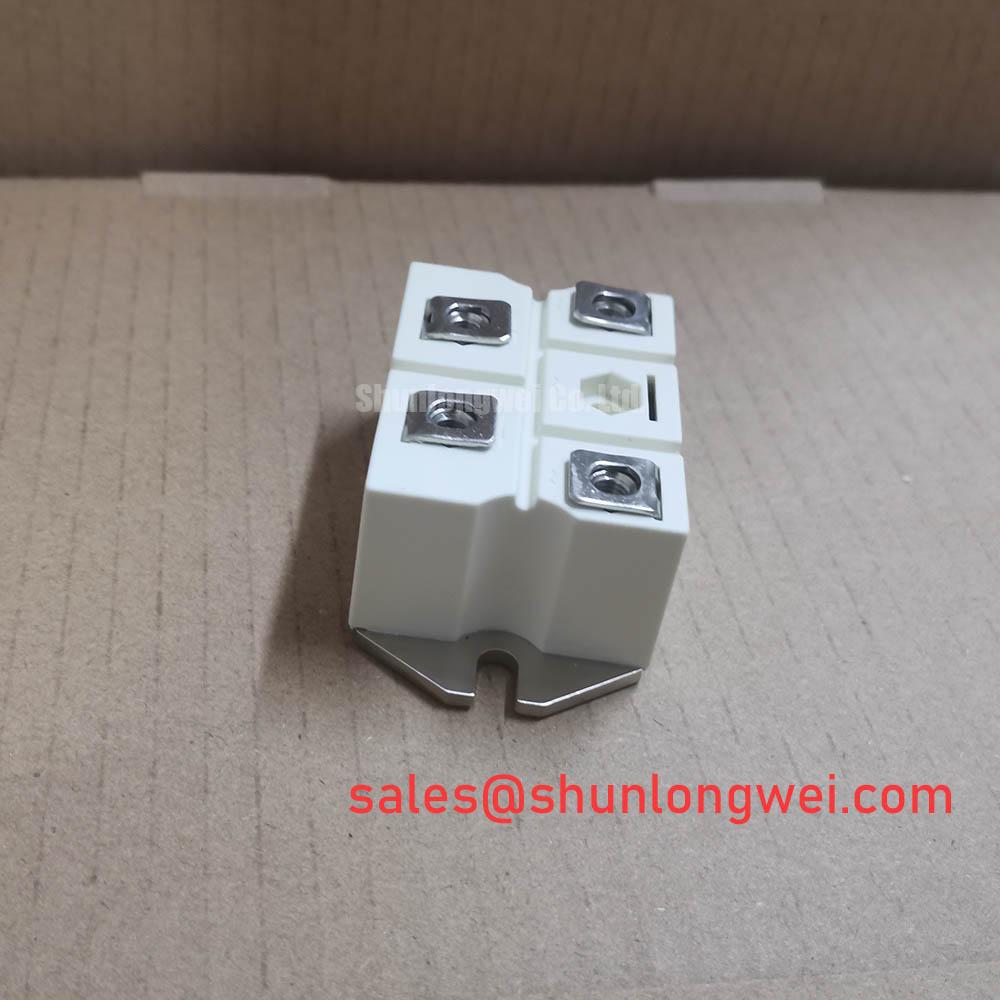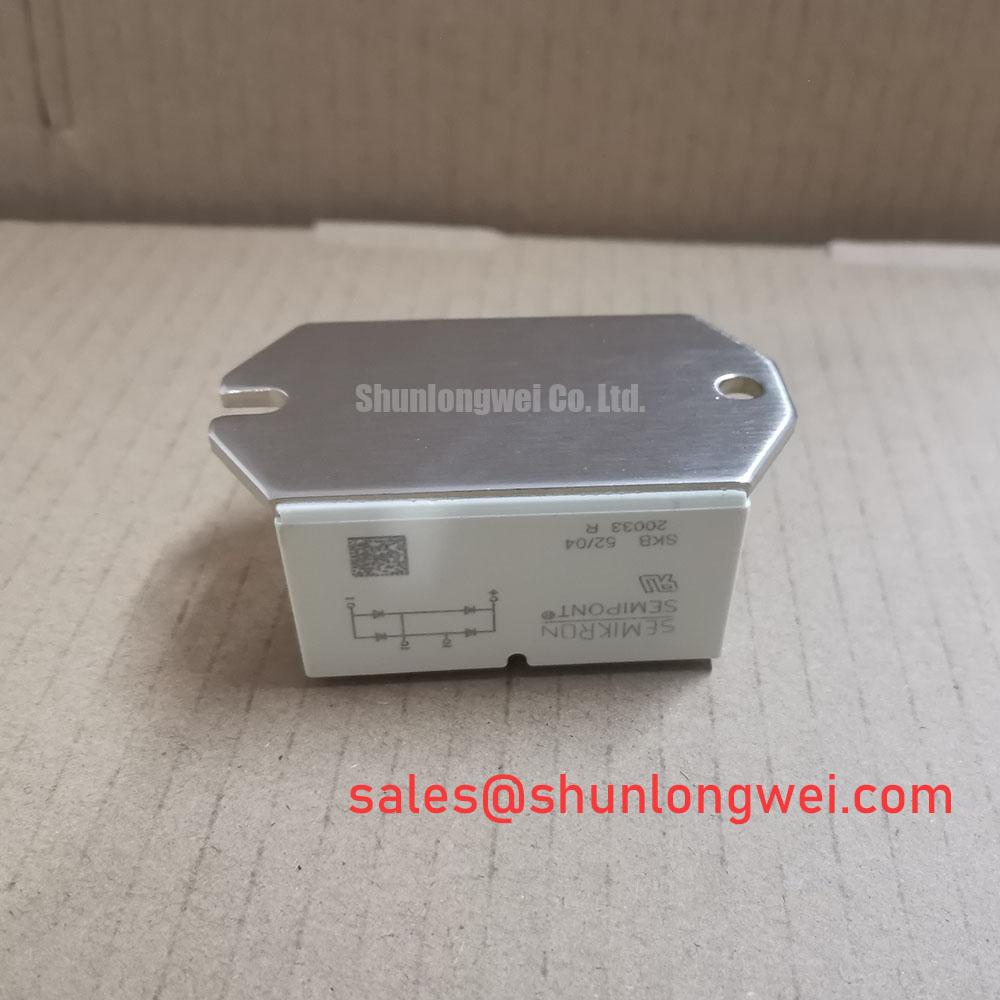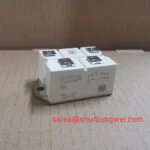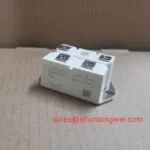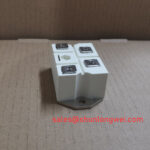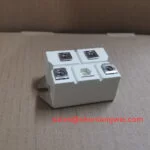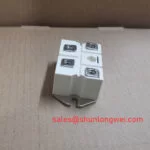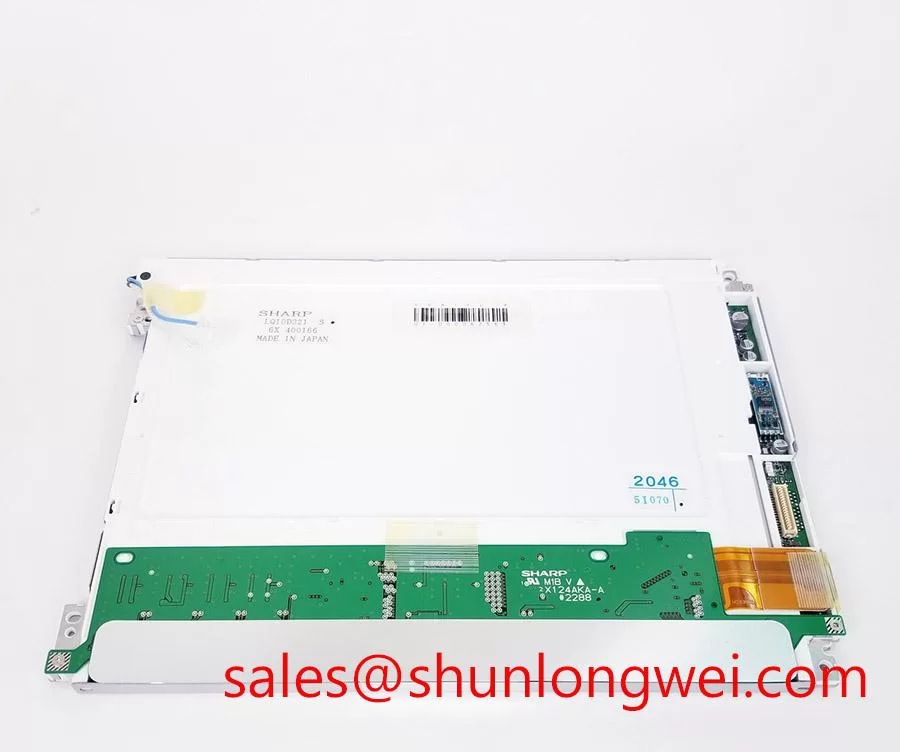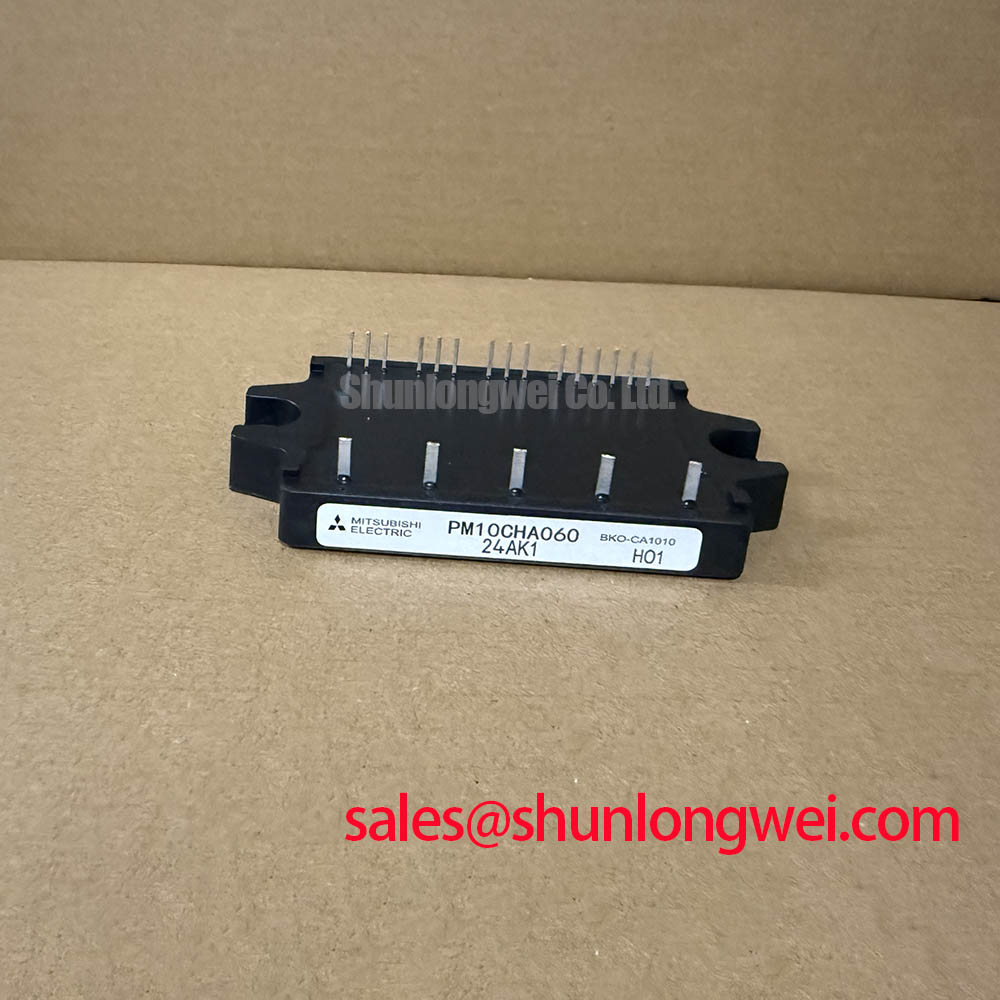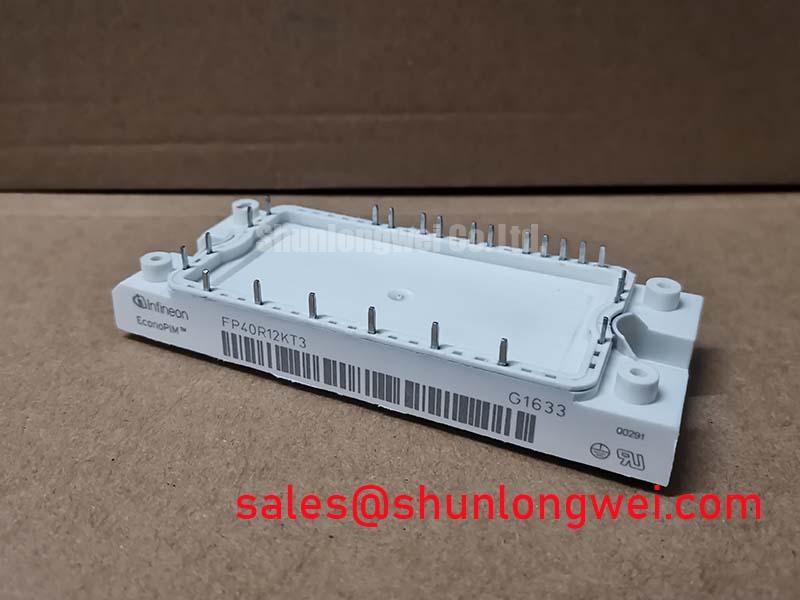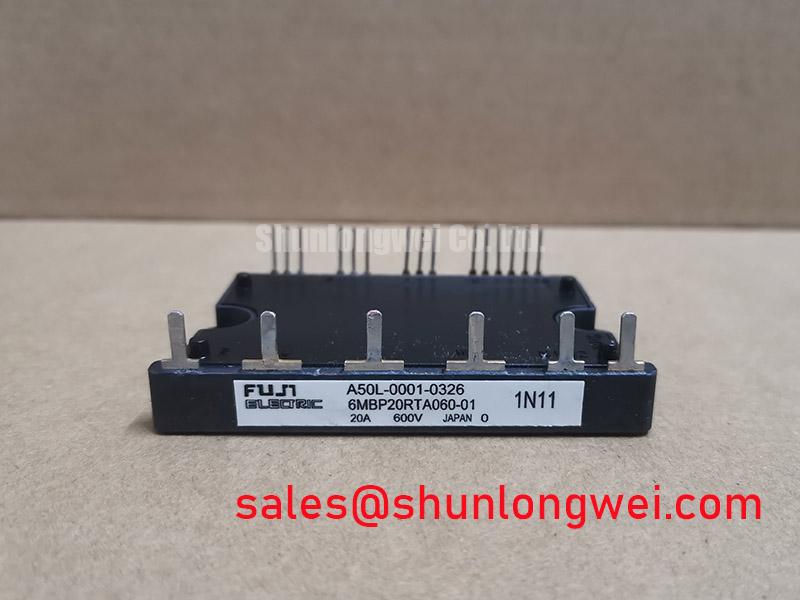## Semikron SKB52/04 | Robust Power Rectifier for Demanding Industrial Applications
The Semikron SKB52/04 is a high-performance, single-phase uncontrolled rectifier bridge designed for simplicity and exceptional reliability in power conversion systems. Engineered by Semikron, a leader in power electronics, this module offers a robust solution for converting AC to DC power with minimal complexity and maximum durability. Its key strengths lie in its high isolation voltage, heavy-duty package, and excellent thermal performance, making it an ideal choice for industrial environments.
### Key Technical Specifications
Engineers require precise data for system design. Below is a summary of the critical performance parameters for the Semikron SKB52/04. For a comprehensive overview, you can Download the SKB52/04 Datasheet.
| Parameter | Value |
|---|---|
| Maximum Forward Current (IFAV) | 66 A (Tcase = 80 °C) |
| Repetitive Peak Reverse Voltage (VRRM) | 400 V |
| Forward Voltage (VF) | ≤ 1.6 V (IF = 60 A, Tj = 25 °C) |
| Surge Current (IFSM) | 650 A (10 ms, Tj = 25 °C) |
| Isolation Voltage (Visol) | 3000 V (AC, 1 minute) |
| Thermal Resistance, Junction to Case (Rth(j-c)) | ≤ 0.4 K/W (per diode) |
| Operating Junction Temperature (Tj) | -40 to +150 °C |
### Application Spotlight: Where the SKB52/04 Excels
The SKB52/04 is not a generic component; it is engineered to solve specific challenges in power system design. Its feature set provides tangible benefits across several key applications:
- DC Motor Drives: In simple Variable Frequency Drive (VFD) front-ends and DC motor controllers, the module's robust surge current capability (650 A) safely handles the inrush currents typical during motor startup, preventing component failure.
- Industrial Power Supplies: The high isolation voltage (3000V) and rugged package ensure safety and reliability in mains-powered equipment, simplifying compliance with industrial safety standards.
- Battery Charging Systems: The module's high forward current rating (66A) makes it suitable for the input rectification stage of medium-power industrial battery chargers, providing a stable DC bus for the downstream charging converter.
- Welding Power Supplies: The excellent thermal performance, characterized by a low Rth(j-c), allows for efficient heat dissipation—a critical requirement in the high-duty-cycle environments of welding applications.
### Technical Deep Dive: The Engineering Advantage
Two core design features set the Semikron SKB52/04 apart, delivering reliability that engineers can count on.
Uncontrolled Rectifier Topology
The SKB52/04 utilizes a B2U (single-phase uncontrolled bridge) configuration. Unlike controlled rectifiers that require complex gate drive circuitry, this design is inherently simple and rugged. By using diodes, it automatically rectifies the AC input without any external control signals. This engineering choice directly translates to a lower component count, reduced system cost, simplified PCB layout, and a significantly higher mean time between failures (MTBF), a crucial metric for industrial equipment where uptime is paramount.
Isolated Metal Baseplate
This rectifier module is built on an electrically isolated metal baseplate. This design provides a superior thermal interface to a heatsink compared to discrete diodes. It streamlines the Thermal Management strategy by creating a single, flat surface for mounting, ensuring low and consistent thermal resistance. This not only improves long-term reliability by keeping junction temperatures in check but also enhances electrical safety by isolating the live circuit from the heatsink and chassis ground. For a broader understanding of how this compares to more complex power components, explore our guide on IGBT modules.
### Frequently Asked Questions (FAQ)
Q1: How does the "uncontrolled" nature of the SKB52/04 impact its use in power factor correction (PFC) circuits?
The SKB52/04 is a standard diode bridge rectifier and does not perform power factor correction on its own. It is designed for the front-end rectification stage. In applications requiring active PFC, this module would typically feed a DC bus, which is then followed by a boost converter (the active PFC stage) controlled by a dedicated IC. The SKB52/04 serves as the reliable and robust "first step" in converting AC to raw DC before the power factor is actively managed.
Q2: What are the key considerations for paralleling these rectifier modules for higher current applications?
While possible, paralleling rectifier bridges requires careful design. The primary challenge is ensuring current sharing. Due to minor variations in the forward voltage (VF) between modules, one unit may conduct more current than the other, leading to thermal imbalance. To mitigate this, engineers should ensure tight thermal coupling (mounting on the same heatsink), use diodes from the same manufacturing batch if possible, and sometimes add small series balancing resistors, though this introduces efficiency losses. For applications requiring significantly higher current, it's often more reliable to select a single, higher-rated module. If you're designing a high-power system, contact our technical team to discuss the optimal component strategy.

